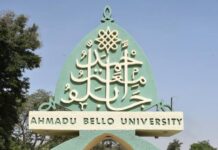The Sassoons: From Baghdad to China’s richest in the 19th century
Few families in history have reshaped global trade like the Sassoons, a dynasty that rose from humble beginnings in Baghdad to becoming one of China’s wealthiest families in the 19th century. Known as the “Rothschilds of the East,” the Sassoons built an empire that spanned continents, redefining business and leaving an indelible mark on history.
The Humble Beginnings That Sparked Greatness
The journey began in the 1840s when David Sassoon, fleeing persecution in Baghdad, sought refuge in Bombay (now Mumbai). With nothing but determination and a sharp business mind, he built a thriving trading empire. But for the Sassoons, India was just the beginning. In 1844, they cast their sights on China, a land brimming with opportunity after the First Opium War.
Seizing the Chinese Markets
At the heart of the Sassoons’ success was their ability to connect worlds. They became key players in the opium trade, a controversial yet lucrative market, and facilitated commerce between Britain and China. The family imported textiles and opium while exporting prized Chinese commodities like silk, tea, and silver. As their influence grew, the Sassoons dominated Shanghai’s trading landscape, outpacing their competitors and cementing their reputation as master merchants.
A New Era Under Elias Sassoon
David Sassoon’s passing in 1864 marked the rise of a new generation. His son, Elias David Sassoon, established the iconic E.D. Sassoon & Sons in Shanghai in 1872. Known as the “New Sassoon” firm, it catered to Shanghai’s elite, selling high-quality textiles and expanding into shipping and insurance. With its headquarters at 5 Renji Road, the firm became synonymous with excellence and innovation.
The Industrial Pioneers of China
Never content with mere trade, the Sassoons transformed into industrial giants. They established factories for textiles, paper, rice, and flour, later branching into breweries and laundries. Their ability to adapt to economic trends ensured their dominance, proving they were more than merchants—they were visionaries.
READ ALSO :King Mohammed VI: Morocco;s business monarch redefining African prosperity
The Real Estate Revolution
As the 19th century drew to a close, the family pivoted towards real estate, a move that redefined their legacy. Iconic projects like the Sassoon House (now the Fairmont Peace Hotel) symbolised their foresight. By the 1920s, real estate had surpassed opium and trade as the most lucrative arm of their empire, securing their place as Shanghai’s leading visionaries.
Victor Sassoon:The Innovator Extraordinaire
The family’s legacy reached new heights under Victor Sassoon, a dynamic leader who took the helm in the 1920s. A British baronet with a flair for innovation, Victor expanded the family’s empire, reshaping Shanghai’s skyline and transforming the city into a hub of modern commerce.
An Enduring Legacy of Adaptability and Success
The Sassoon family’s rise from refugees in Baghdad to titans of industry in China is a story of courage, adaptability, and brilliance. Their journey is not just one of wealth but of bridging cultures, transforming industries, and leaving a legacy that continues to inspire generations.
Their story is a testament to the limitless possibilities of vision and determination. From the bustling markets of Bombay to the iconic streets of Shanghai, the Sassoons carved their names into history, proving that success truly knows no borders.
Written by Sakinat Musa Abubakar, Editor at Neptune Prime
Follow the Neptune Prime channel on WhatsApp:
Do you have breaking news, interview request, opinion, suggestion, or want your event covered? Email us at neptuneprime2233@gmail.com





